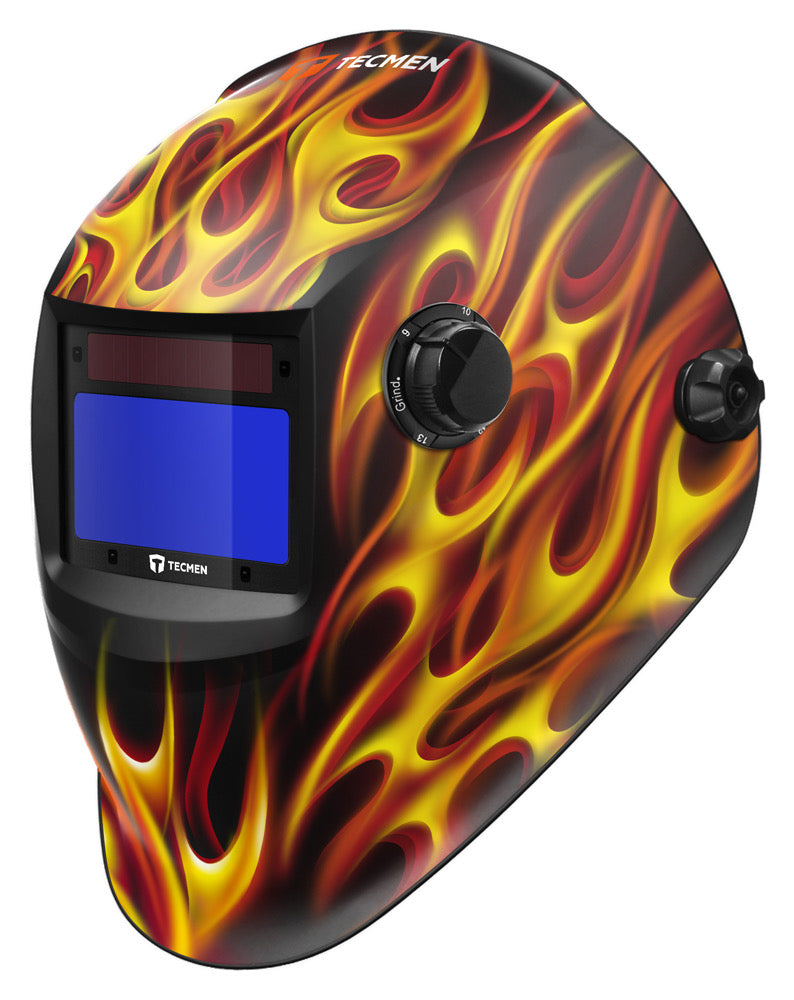
Welding Helmets – How to choose the right one for you?
When welding you need to use quality safety equipment. This is especially important with Welding Helmets as poor-quality products will not only affect your welding ability but could cause loss of eyesight. Compliant Welding Helmets are made & certified to meet Australian Standards AS/NZS 1338.1 (Auto Darkening) & AS/NZS 1337.1 B (High Impact). These standards ensure that both the helmet and lens have passed a testing process that keeps the user safe from the impact of flying objects & 100% protection from ultraviolet and infrared rays. If you do find a Welding Helmet that does not have the correct Standards Labelled then DO NOT BUY or USE!!
So how do you choose the correct Welding Helmet? There is such a wide range of styles & features that can be confusing. Here are some simple easy-to-follow important guides to follow to help your Welding Helmet purchase be an enjoyable one and not something to regret.
**Please note this information is basic and is intended to be used as a general guide. Individual requirements should always be considered.**
- First question to ask is what application and type of welding are you using the Welding Helmet for? Mig Welding, Tig Welding, Stick Welding, Plasma Cutting, Oxy Welding? Each welding process requires different levels of shade protection & it’s important that the Welding Helmet shade suits your needs. For example:
- Oxy Welding & Plasma Cutting require a minimum of shade 3-5.
- Stick Welding requires a shade range between 9-13.
- Mig & Tig Welding requires a shade range of 9-13.

- Passive Welding Helmet Vs Auto Darkening Welding Helmet?
Passive Welding Helmets (single shade Non-Auto Darkening Style) are economical, lightweight & easy to use however have their downsides such as:
- Most only offer a small viewing area giving you less vision of the welding zone.
- If a lighter or darker shade is required, then the shaded lens must be replaced with a different Lens which is time consuming & an expense. Many passive shaded lenses are made of glass and as such are easily broken. They also offer little heat resistance (unless a gold coated lens is used which reflects heat).

Auto Darkening Welding Helmets however address many of the issues that Passive Helmets pose such as:
- Most Auto Darkening Welding Helmets offer variable shade adjustments. Allowing the darkness to be adjusted easily to suit the individual needs of the user.
- There is a wide range of viewing sizes on offer with Auto Darkening Welding Helmets. They range from smaller sizes to very large sizes allowing easier viewing whilst welding.


Auto Darkening Welding Helmets also offer other features such as:
- Number of sensors - Generally either 2 sensors for basic Light Industrial Stick & Mig Welding Helmets or 4 sensors for Tig & Mig Welding Helmets. 4 sensor lenses are the preferable option as they are more responsive to a wider variety of welding applications.
- Delay Adjustment – the ability to extend the dark time after the welding arc has stopped. This is commonly used when repetitive tack welding is performed to reduce eye fatigue from on/off repetition. The extended dark delay allows the user to move to the next weld whilst still in dark mode (within a set time).
- Sensitivity Adjustment – this adjustment is to customise the responsiveness of the lens in different welding environments. For example: If the welding is being performed Outside in bright conditions where a low arc is harder to detect then for the helmet sensors to be fully effective then you can increase or decrease the sensitivity. If inside where the sensors can detect the weld arc easily then you can reduce the sensitivity, so the sensors don’t detect other lights in the workshop area.
- Battery Replaceable. All Auto Darkening Welding Helmets have a Battery/s inside that operates the Welding Lens. Many low-priced Auto Helmets don’t allow replacement of the battery which means that once the battery has no charge then the helmet becomes unusable and disposed.
- Another important factor to consider is the weight and overall design of the Welding Helmet. There are a wide range of different styles and designs, and some have a Flip Up Lens for Clear Grinding. All these features effect the weight and feel of the Welding Helmet and may make the helmet quite large and unsuitable for tight spaces for example. The weight can also contribute to fatigue if too heavy.

So, to summarise whenever looking at buying a new Welding Helmet take the time to look at the features, overall quality, are spare parts such as cover lenses available easily? And most importantly buy from a reputable dealer who offers support and advice with choosing the correct helmet.
Stay Tuned for our next edition to this series of Blogs - Auto Darkening Welding Helmet Lenses.
At Eastern Welding Supplies we make a commitment to all our customers to provide expert advice and guidance with anything we sell. We only sell Quality Products that meet the needs & standards of the Australian Welding Industry.
Subscribe to us to keep in touch for more news & informative Blogs.
If anyone has any ideas or questions that they would like us to blog about, please contact us.

Leave a comment